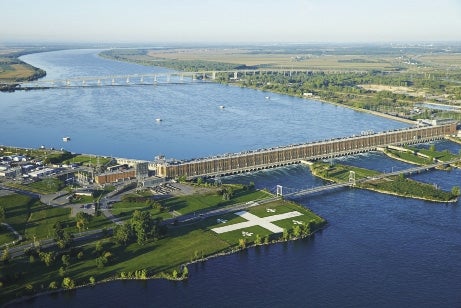Stakeholders discuss energy law timeframe, questions

As public officials take steps towards wind and hydropower procurements called for under a new renewable energy law, industry officials on Tuesday said the state should require utilities to purchase more electricity from renewable sources.
Former Sen. Ben Downing, now the vice president of new market development at the solar developer Nexamp, said he believed an increase to that requirement, known as the renewable portfolio standard or RPS, was a missing piece from the law signed last August.
"I don't see a way that the Legislature doesn't ultimately deal with increasing the RPS," Downing said during a State House News Forum at the Omni Parker House. "I think that was the last one that I would have said was part of a comprehensive solution that needed to be in there, and I know there are many reps and senators that are working on that now."
The law requires Massachusetts utilities to procure 1,600 megawatts of offshore wind and 1,200 megawatts of new hydro, solar and land-based wind by 2027, a date Vineyard Wind CEO Erich Stephens said he does not think "is what anybody had in mind."
"It sort of kicks the can ten years down the road," he said. "It also makes evaluating proposals that much harder. If I were to say to you give an iPhone to me, but you don't have to give it to me until 10 years from now, you could really just make anything up."
Vineyard Wind is one of three developers vying to build wind energy installations south of Martha's Vineyard, along with Deepwater Wind and a partnership between DONG Energy and Eversource.
A draft request for proposals on offshore wind was released earlier this month, calling for 400-megawatt proposals. The final RFP is expected to be issued next month, with bidders required to submit notice of intent by July and proposals due December 20, 2017.
Johannes Pfeifenberger of The Brattle Group said the 10-year timeframe poses "huge risk" for developers.
"In some ways, risk is cost, and the more risk we impose on the developers, the more costly the projects are going to be," he said.
Pfeifenberger said he also would have preferred to see a regional approach to offshore wind, calling Massachusetts "frankly too small to jumpstart" the industry if it acts on its own.
Downing, however, said moves made by Massachusetts could serve as a "forcing factor," prompting other states to ramp up their own clean energy efforts.
Demonstrating demand by joining with New York to pursue offshore wind would help drive wind energy prices closer to the lower costs experienced in Europe, as would developing a full transmission plan, said Ed Krapels, the head of the clean-power transmission specialist Anbaric.
"If you took the 1600-megawatt legislative idea and said to the industry, 'We are going to build 1600 megawatts in Massachusetts, and here's the transmission map, this is where you should connect' -- that would do more to give the offshore wind generators confidence that we're actually going to do it," he said. "If we say we're going to do onesies-twosies, we're going to do 400 and maybe we'll do another 400, that isn't going to motivate anybody to build a factory here."
Downing, who last session co-chaired the Joint Committee on Telecommunications, Utilities and Energy, said he thinks state regulators have "a great degree of flexibility" to address concerns raised Tuesday and would find lawmakers who are "willing partners" if legislative adjustments are needed.









0 Comments